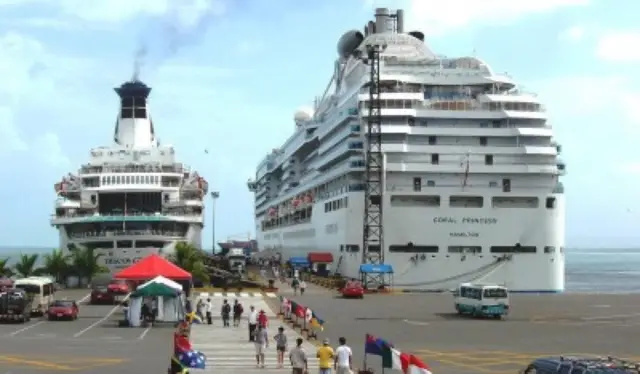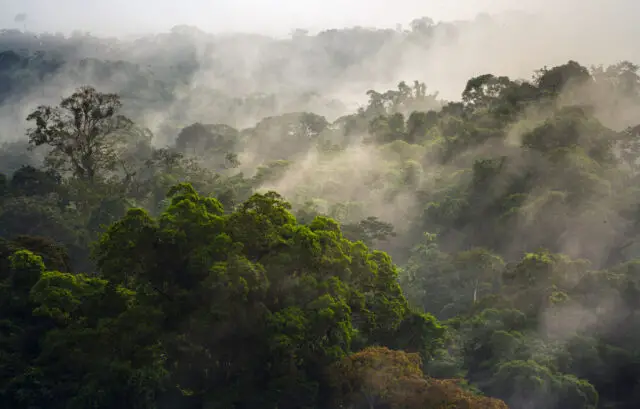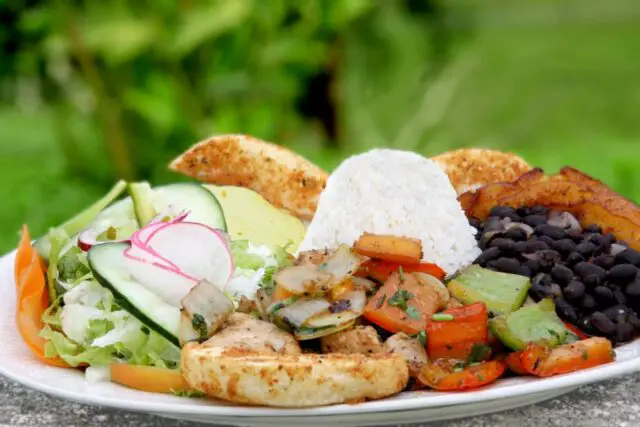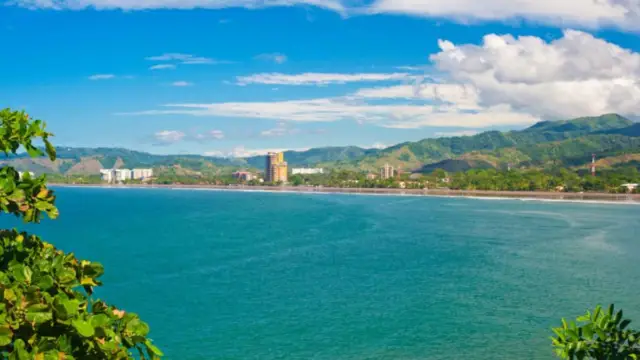Whether you want to relax on beautiful beaches, hike through the rainforest, see a volcano, or just enjoy somewhere sunny and cheerful, Costa Rica is your dream destination.
Read on for all the essentials you need to know about a trip to Costa Rica:
Where is Costa Rica?
Costa Rica is located in Central America, between Nicaragua and Panama. It is slightly larger than Denmark, blessed with more than 1,290 km of coastline along the Pacific Ocean in the west and the Caribbean Sea in the east. Costa Rica’s terrain can be summed up as beaches and plains separated in half from north to south by towering mountains and volcanoes. The Pacific coast has mountainous peninsulas, two large gulfs, and many small inlets and bays.
There are two international airports in Costa Rica: the Juan Santamaría International Airport (SJO) in the capital area of San José, and the Daniel Oduber Quirós International Airport (LIR) in Liberia in the province of Guanacaste, in the northwest of the country.

Why should you go on vacation to Costa Rica?
Costa Rica is a natural paradise filled with incredible animals, beautiful nature, fun adventures, and friendly people. Costa Rica is one of the richest places in biodiversity in the world. It is also one of the world’s leading ecotourism destinations and around 26% of the country is protected in national parks and reserves. The country obtains more than 90% of its energy from renewable sources such as hydroelectric, wind and geothermal, and aims to be completely carbon neutral by 2021.
There is something for everyone in Costa Rica. Here you find rain forest, cloud forest, central highlands with dairy farms and coffee plantations, vibrant cities, tropical forests dry, volcanoes with natural hot springs, lowland swamps and mangrove estuaries, rivers that allow world-class whitewater rafting, and wonderful beaches in a rainbow of colors You can get Costa Rica travel packages that go through the main things you must see or longer programs that visit the best destinations in Costa Rica.
What is there to do in Costa Rica?
In Costa Rica there is literally something different to do every day. For the adventurous, there are plenty of tours to get your adrenaline pumping: zip lining, mountain biking, horseback riding, rafting, kayaking, sailing, surfing, paddle boarding, snorkeling, scuba diving, and canyoning.
Nature lovers will enjoy hiking, bird watching, wildlife tours, swimming in river pools, volcano tours, hot springs, chocolate and coffee tours, visits to indigenous communities, and rural tourism experiences. Travel to Costa Rica is great for families, and there are also plenty of wellness activities like yoga and luscious spas.
How are the people of Costa Rica?
Costa Rica is a democratic, peace-loving country that abolished its army almost 70 years ago and cares about the education and well-being of its society. Ticos and ticas (as Costa Ricans call themselves) are incredibly warm and welcoming people, and are generally happy to welcome visitors to their country. Tourism is one of the main industries and Costa Ricans are friendly and helpful hosts and guides.

Spanish is the official language in Costa Rica; however, English is commonly spoken in tourist areas. On the Caribbean coast, many residents are of Jamaican descent and speak a kind of English Creole dialect.
Costa Ricans love to talk and enjoy life. There is a reason why the national expression is “Pura Vida”. Pura vida is used as a greeting, a goodbye, to say “good”, “thank you” or “no worries”. Above all, it means “Life is good!” How can I travel around Costa Rica?
You have several options for getting around Costa Rica on vacation: rent a car, private transfers, shared transfers, and local flights. Costa Rica can be a small country and although distances may seem short on a map, you must remember that it is mountainous and the roads tend to be narrow and winding. Additionally, most highways outside of the San José metropolitan area are only two lanes, and road signage is not highly developed. For these reasons, local flights within the country or private and shared transfers are very popular.
How is the weather in Costa Rica?
Costa Rica is located in the tropics about 8 degrees north of the equator. The country is divided from north to south by mountain ranges, which create distinct weather patterns on the Caribbean and Pacific sides.
The Pacific side of the country generally experiences the dry season from December to April, and the green (rainy) season from May to November. The Caribbean side of Costa Rica is rainy most of the year, with its driest period from mid-August to the end of October.
Each season has its own unique beauty and characteristics. The rainy season creates lush green landscapes, and the dry season is perfect for orchids, bougainvillea, and colorful flowering trees. Although there are relatively defined seasons, it can rain anywhere at any time; after all, the rain forest is here. Still, even in the rainy season, it usually doesn’t rain all day, every day.
Temperatures in Costa Rica fluctuate greatly based on elevation and microclimate. The beaches and lower elevations are significantly warmer, while the higher elevation areas of the Central Valley and mountains are cooler.

What is the currency of Costa Rica?
The Colón (¢1.00) is the national currency of Costa Rica, although US dollars are commonly accepted in tourist areas. In fact, most tourist companies they list their rates in US dollars. The exchange rate against the US dollar and the euro can vary from day to day, however, it usually ranges between 500 and 600 colones per US $1.
Change money at a bank instead of at the airport to get a better exchange rate. Please note that $100 and $50 bills will not be accepted anywhere other than at a bank; on the other hand, small stores or rural locations may not accept US dollars at all. Almost all banks have ATMs where you can get cash in colones with your credit or debit card.
Most international credit cards, especially Visa and MasterCard, are accepted throughout Costa Rica. Be sure to alert your bank in advance of your travel plans so your account isn’t frozen due to suspected theft. Traveler’s checks are almost never accepted; don’t bring them.
What to pack to travel to Costa Rica?
What would a travel guide be without such a list? Please note that light, quick-drying clothing is essential. Basically, you need to have a passport that is valid for at least six months after your trip ends. And depending on which country you are from, you may need a visa (find out more here). When you go on a tour, leave your original passport in your hotel safe and take a copy with you. (Tip: save a photo of your passport information page on your phone.) For car rental, you will need a valid driver’s license.
Wi-Fi internet is common in tourist areas, so feel free to bring your cell phone or tablet; don’t forget chargers and cables. Electricity in Costa Rica is 110 volts, like in the United States.
How is Costa Rican cuisine?
Costa Rican cuisine is based on the Latin American staples of rice and beans, and features fresh vegetables and fruits. It is not spicy, unlike in countries like Guatemala and Mexico to the north.
The traditional breakfast is “gallo pinto”, which is white rice and black beans mixed with chopped white onion, sweet red chili, garlic, and cilantro, and is usually served with eggs, fried sweet plantains, corn tortillas, and maybe white cheese. A typical lunch or dinner is called “casado” and consists of white rice, black or red beans, fried plantains, a small salad, corn tortillas, and some type of meat (chicken, pork, beef, or fish).

Since Costa Rica is a coffee-producing country, strong coffee is the nation’s delicacy. Apart from morning coffee, daily life stops around 3:00 p.m. for a “little coffee”. Here coffee is always taken with a small snack, either salty or sweet. Fruit drinks, called “frescos,” are very popular, and Costa Rica’s two main national beers, Imperial and Pilsen, are excellent when chilled.
What cultural tips should I know to visit Costa Rica?
Greetings: When greeting someone for the first time in Costa Rica, a handshake is acceptable, or more commonly a small “air kiss” on the person’s right cheek (no cheek kissing!). Costa Ricans generally don’t hug anyone other than a very close family member or friend.
Kind comments: When you enter a store, restaurant, hotel, tour company, business, etc., it is customary in Costa Rica to politely greet the person who attends you with a “Good morning”, “Good afternoon” or “Good evening”, and even “How are you?” before asking for anything.
Patience: Costa Ricans tend to be in less of a hurry than most Europeans or North Americans; perhaps this is the reason why their quality of life is so high. Be patient if things take longer to make than in your home country. However, just the opposite can be seen in Costa Rican drivers, who are chronically impatient. Be positive and patient with the unexpected: remember that the magic of traveling is discovering the differences in the world.

Relax: Costa Ricans are friendly people and love to have fun. They love to joke around, tease without bad intentions and have a good time. Also be friendly. Remember, smiles are free and you’re on vacation!

For those who have experienced shifts in consciousness and know that more peace, joy, and love awaits in a better living environment. A bold shared vision. A living community and hub for innovation. A sustainable ecosystem for living and working. A model for the new future.
